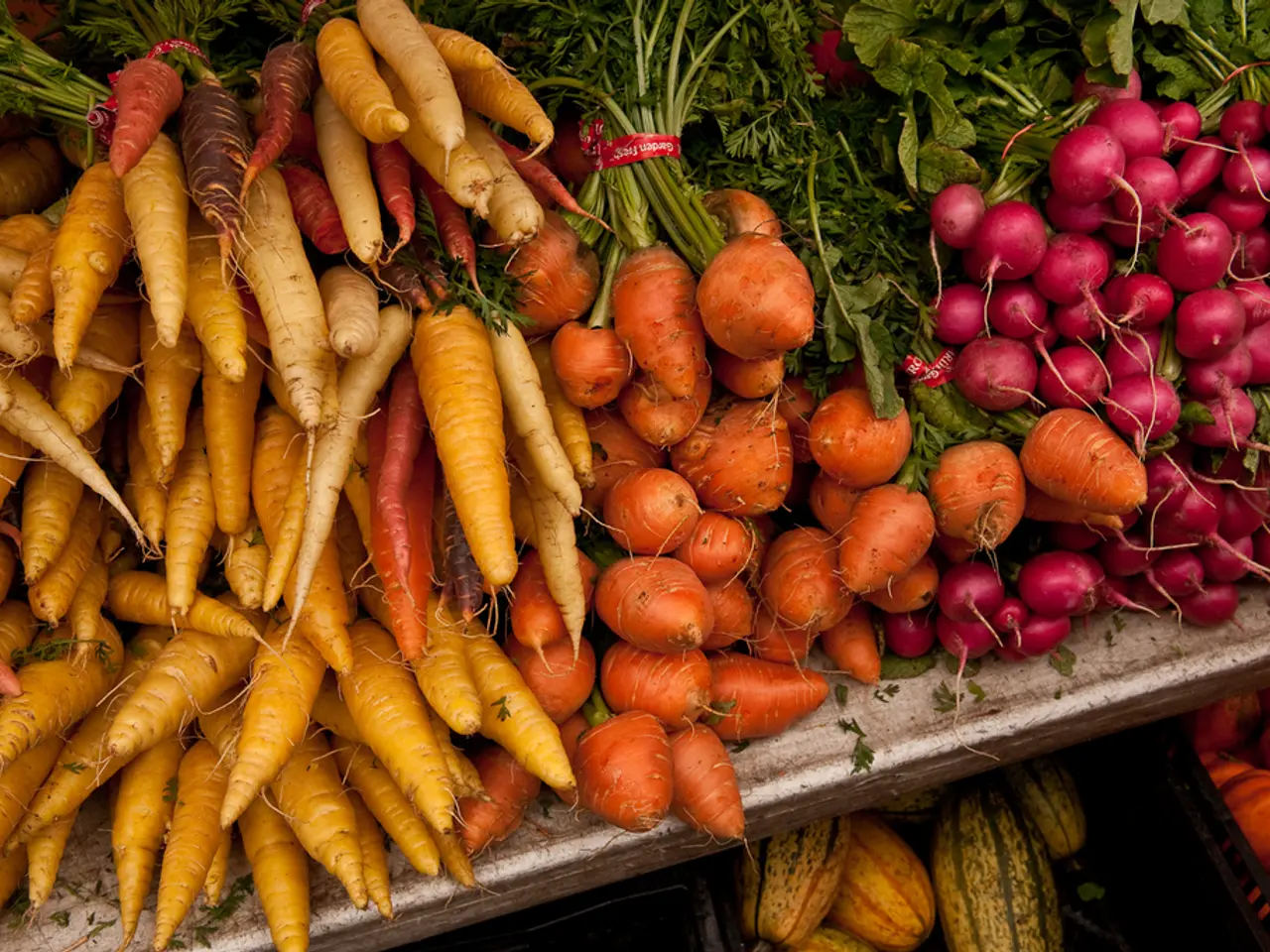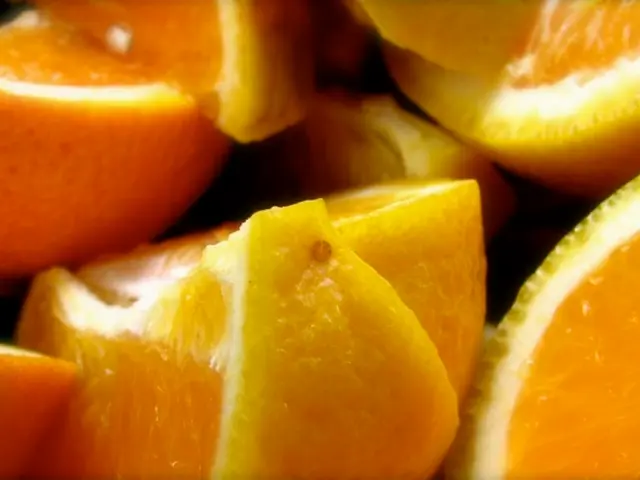Unveiling the Secret Formula for Rich Soil in Vegetable Gardening
In the quest for a thriving vegetable garden, the foundation lies in the soil. Here's a comprehensive guide to help you determine the ideal soil type, nutrients, and quantity for your garden.
To begin, you can either have your soil professionally tested or conduct a DIY jar test to identify its type. For instance, loamy soil, with a perfect balance of sand, silt, and clay, is ideal for growing vegetables. However, if you have sandy or clay soil, specific measures need to be taken to enhance its properties.
Sandy soil, which drains quickly but may lack nutrients, can benefit from adding 3 to 4 inches of organic matter such as compost or well-rotted manure. Additionally, materials like coconut coir can help with moisture retention. On the other hand, clay soil, which retains water but can be heavy and difficult to work with, can be improved by adding 3 to 4 inches of compost and fibrous materials like straw or fine bark mulch.
Organic matter, such as leaves, straw, grass clippings, and coconut coir, can be worked into the soil to improve drainage and aeration, create more oxygen for plants, and provide a slow-release form of fertilizer.
It's important to test your soil before adding fertilizers to understand what nutrients it may be lacking. This will help you avoid over-fertilizing. You can use a test kit to check the levels of nutrients and make amendments as needed.
Inorganic fertilizers, such as bone meal, feather meal, fish meal, kelp meal, and rock phosphate, can increase the availability of nitrogen, phosphorus, and potassium in soil. Other types of fertilizers, such as blood meal, bone meal, kelp meal, and rock phosphate, can be used to increase specific nutrients like nitrogen, phosphorus, and potassium, depending on the needs of your plants.
Vegetables need well-drained soil with a good balance of nitrogen, phosphorus, and potash, along with other micronutrients and minerals. To address drainage issues, consider installing temporary dams, digging trenches with gravel, or creating interceptor ditches along the margin of the garden. If drainage problems persist, growing vegetables in containers with drainage holes and high-quality planter's mix can be a solution. For severe drainage issues, raised garden beds may be a long-term solution, filled with a planter's mix that includes compost and other organic matter.
To determine the ideal amount of topsoil needed for a vegetable garden, the main considerations are the dimensions of the garden bed and the desired soil depth, which depends on the plants grown. Generally, vegetable gardens require 12 to 18 inches of topsoil since vegetables are "hungry feeders" and root crops especially need deeper, stone-free soil to grow properly.
To calculate the volume of soil needed, multiply the garden length by the width by the desired depth. For example, for a 4 ft by 8 ft bed with a 12-inch depth, the volume of soil needed would be 32 cubic feet.
For raised beds, a typical ideal mix is 50% topsoil and 50% compost to ensure nutrients and good soil structure. However, ratios like 40% topsoil, 40% compost, and 20% coarse sand are also common for fluffier, well-draining soil.
When purchasing soil, expect some soil volume to settle after watering and rain, so slightly overfilling or planning to top off later is advisable. Online soil calculators can simplify this by inputting bed dimensions and desired soil depth to provide the exact volume of soil mix required.
In summary, measure your garden's area, decide on about 12-18 inches of soil depth, then multiply to find volume. Use a balanced mix of topsoil with compost for optimal vegetable growth, and plan for settling by slightly overestimating your initial soil amount. Happy gardening!
[1] Gardening Know How. (n.d.). How Much Soil Do I Need for My Garden? Retrieved from https://www.gardeningknowhow.com/garden-how-to/soil-fertilizers/how-much-soil-do-i-need-for-my-garden.htm [2] The Spruce. (2020, November 10). How to Calculate Soil Volume for a Raised Garden Bed. Retrieved from https://www.thespruce.com/calculate-soil-volume-for-raised-garden-bed-2132840 [5] Calculate the Amount of Soil Needed for a Garden. (n.d.). Retrieved from https://www.calculatorcat.com/soil-calculator/
Maintaining a successful home-and-garden lifestyle often involves careful attention to gardening, particularly when it comes to vegetable gardens. After determining the ideal soil type, nutrients, and quantity for your garden, it's essential to adapt your soil based on its properties. For instance, if you have sandy soil, adding organic matter like compost or well-rotted manure can improve its structure and fertility. On the other hand, clay soil can benefit from materials like straw or fine bark mulch to enhance its drainage and workability.




